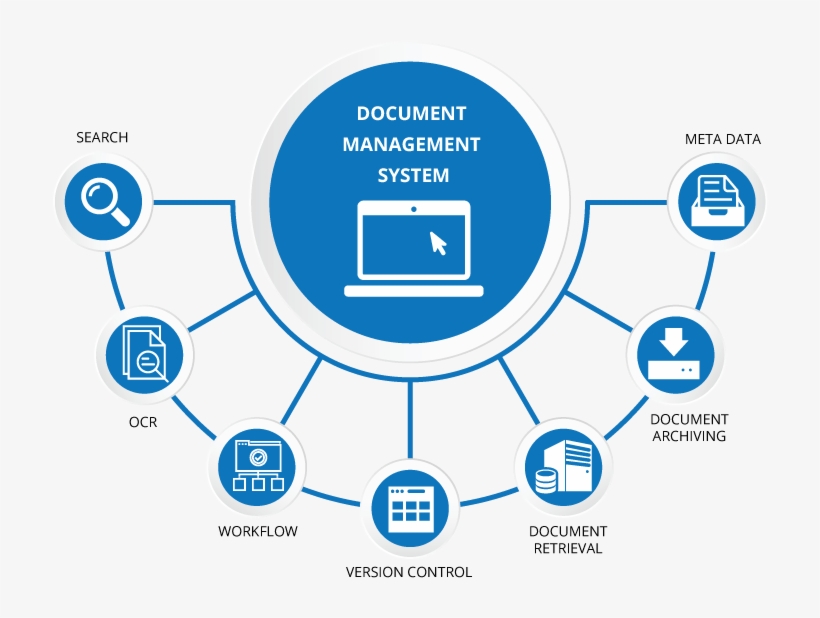Onboarding technology is one of the primary ways modern businesses are cutting costs, improving efficiencies, and driving stronger bottom lines. But the world of business technology is chock full of solutions that can make it challenging to know which software is best for your organization and how it can produce actual value.
There are some solutions that modern businesses can’t skip, though. In that essentials list is document management. You simply cannot scale or run your business cost-effectively without a document management system to keep files organized and retrievable, keep employees collaborating, and ensure document security.
If you’re looking for ways to easily see greater productivity throughout your organization, look to document management. Below are the three primary ways a document management system improves business efficiency.
Introduce Automation To Cut Manual Work
A document management system injects automation into your processes, eliminating the need for human input and work when it comes to menial, repeatable, tedious tasks. Processes like running paperwork among employee desks, seeking approvals by sending individual messages, emailing documents to team members, and more require human time that could be better spent on strategic work.
A document management system streamlines manual workflows associated with documents, including creating files, storing them, disseminating them, retrieving them, and compiling them for audits. With these processes performed by the system instead of human workers, your employees can devote their time to tasks that are more valuable to your long-term growth and more fulfilling for those employees.
For example, manually updating paper documents takes time and can result in people using the wrong versions of specific files and wasting time figuring out what was changed and where. Document management systems offer version control so you can see who changed what, which version is the most up-to-date, and what path that document went through for approvals and sign-offs. Automating all these processes results in significant increases in efficiencies at each step.
Additionally, you’ll cut certain manual processes altogether, like printing and mailing documents, organizing physical files, rifling through cabinets, and any other task associated with physical paper.
Reduce Time Spent Across Processes:
Perhaps the most significant efficiency you’ll see is the plain and simple reduction in time spent across document-related operations. Introducing automation throughout document-related processes results in every employee getting daily time back. The amount of time saved on retrieving documents alone can amount to hours, days, and weeks as document management systems archive files and index them using metadata.
Advanced searching capabilities help users locate documents based on any data or text prescribed in the tagging infrastructure, and documents are stored according to specific variables. You can also tie your documents with enterprise resource planning (ERP) records to coalesce more data throughout your business, centralize information management, and get greater visibility into your data.
With document management, you’ll see operations speed up in general, especially when it comes to ones involving a heavy amount of collaboration. Without a document management system, your files either live in physical folders that need to be located in closets or drawers, or they live in siloed electronic storage systems on the local hard drives of employees and their individual computers. These manual systems do not lend themselves well to rapid, effective collaboration.
A document management system gives your business centralized access to files securely, so only the right parties have access to the correct files. With the ability to integrate documents into communication systems like email, employees can more easily attach files and scanned documents. The system then enables employees to share knowledge quickly by being able to send and collaborate more efficiently. Quicker knowledge-sharing means faster decision-making — something that can contribute positively to your bottom line over time.
All aspects of customer-facing document processes can see a reduction in time as well, resulting in more sales and happier customers. Customer-related documents are more easily retrievable for customer service personnel — enabling them to better help customers.
Human resources and onboarding is another department that sees a significant time reduction with a document management system. You can automate the onboarding of employees, so a human does not have to manually walk them through paperwork or process that paperwork. With faster onboarding and training, your new employees can get up to speed more efficiently and start delivering value in a shorter time frame, while your HR workers can focus on supporting employees, payroll, recruiting, and more.
You’ll also reduce the time spent during the auditing process. If you’ve ever been audited in an industry with complicated or high-volume regulations, you know how laborious it is to gather documents and produce the paperwork. Document management systems help you track and maintain compliance records and pull documents for audits. You’ll significantly speed up the process of gathering required information, reducing audit preparation time to hours instead of days or weeks.
Reduce Errors Throughout Document-Related Operations:
With automation removing the human component of many tasks, you’ll automatically reduce the number of errors that occur throughout workflows. The more human touch points on a given document, the greater the chance for mistakes that could create bottlenecks in the future.
You’ll achieve greater efficiencies throughout security and compliance-related processes as well. Document management systems enable you to protect confidential, sensitive data using digital archiving, document redaction, rose-based user permissions, multi-factor authentication, and more. Introducing these effective security features throughout your organization means you’ll spend less time cleaning up security messes, figuring out what went wrong and where, and physically securing documents in storage.
With disaster recovery built into document management systems, you’ll also reduce the time involved in post-security incident operations. Your files remain backed up, so if a disaster occurs, your business experiences a little disruption, and you can get back to work more efficiently.
Greater Efficiency Results in Cost Savings:
With these efficiencies running throughout your business, you’ll begin to feel the real value in terms of revenue. You’ll cut costs across the board with document management, including ones associated with paying for physical storage space. Explore document management today to see what efficiencies you can realize in your organization.

